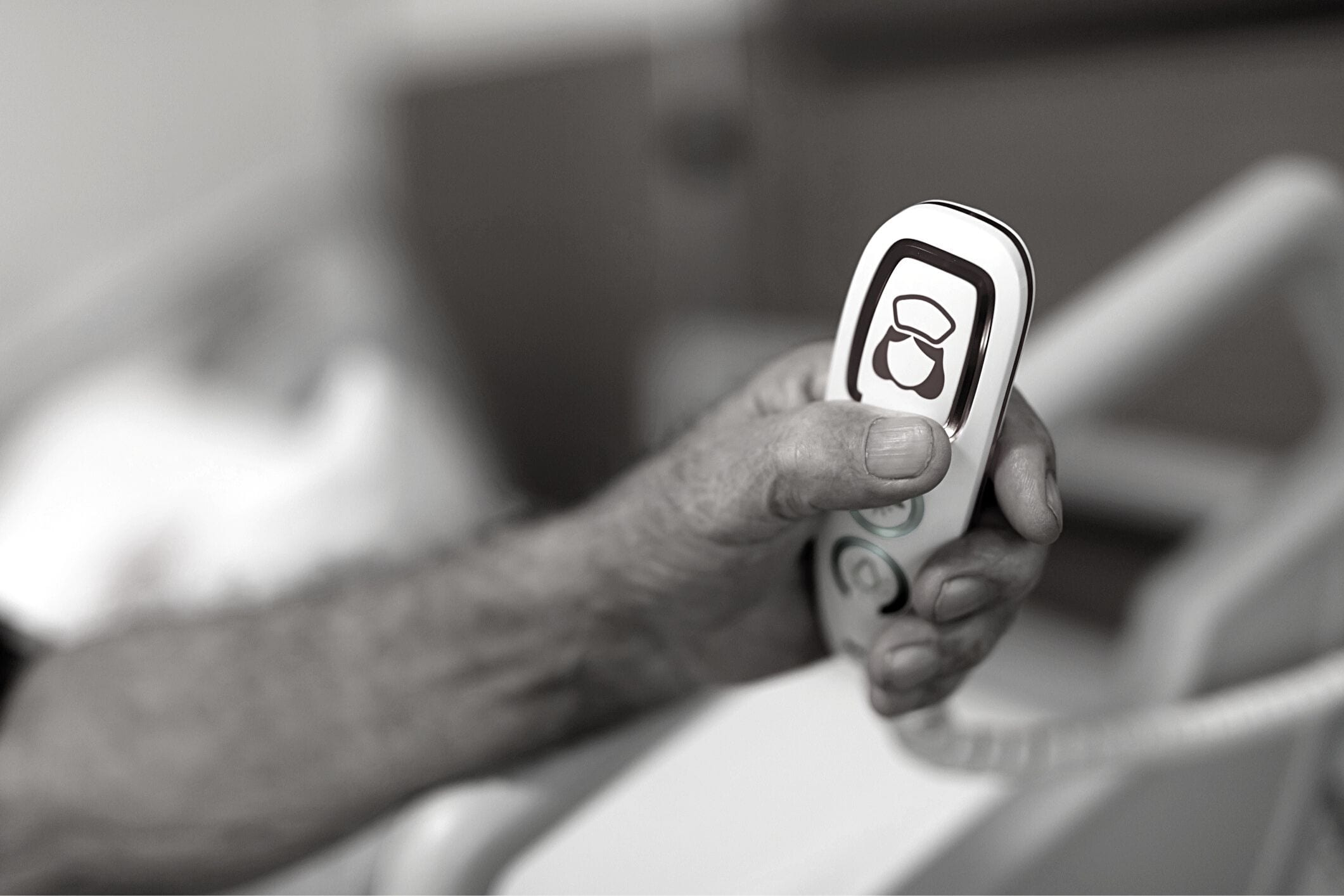
The question is an understandable one. Responding to continuous alarms while caring for people with complex needs can be physically and mentally demanding, especially when it creates pressure on workflows.
It’s also difficult to answer a large volume of calls when you don’t know the issue you are attending to, and can’t be prepared for the task at hand.
Call bells are still one of the main communication systems that link staff to the residents that they care for – and for many elderly people, they serve as a lifeline in times of need.
There are many reasons for their continuous use, ranging from physical or cognitive impairment to toileting problems, medical emergencies, feelings of distress or an inability to communicate. For residents in need of 24/7 care, receiving a timely response is an important factor in satisfaction and quality of care.
Instead of less calls, innovate the system
Rather than encouraging less frequent bell usage, one way forward is to use technology to innovate the way staff members attend calls.
Digital technology is currently revolutionising many areas of nursing practice and education. Automation is supporting people with impairments; virtual reality is creating new education experiences; telehealth is rapidly changing the nature of frontline care.
Call bells are another area on the cusp of change. Traditional systems are now being replaced by flexible and adaptive solutions that give residents more freedom while maximising safety, reducing response times and creating less disruption to workflows.
This enables staff to work smarter, helping them remain attentive to alarms without neglecting the care of other residents.
Solution: More flexibility and better responsiveness
To help facilities stay on top of frequent calls, healthcare technology company Ascom has developed the Resident Response and Nurse Call System: a digital communication platform that combines advanced call devices with smartphone technology and reporting software.
With Ascom’s system, alerts are sent directly to a smartphone carried by staff rather than a fixed PC or nursing station. If someone is in the a middle of a task and unable to respond, the call is automatically redirected to a colleague so that no-one falls through the gaps.
The system informs staff about the nature of a call when they receive it, enabling them to prepare for the task at hand rather than spending unnecessary time going to-and-from the facility. It also highlights emergency situations, which helps workers prioritise their responses if they receive multiple calls at once.
Delivering a better resident experience
As well as streamlining responses to frequent bell calls, smart technology is also creating a better experience for residents while helping them stay safe.
Ascom’s resident response system includes the option of call bell pendants worn by residents, giving them freedom to move around their environment and enjoy greater independence without compromising their security.
This solution is also scalable for larger multi-site facilities. The advanced version of the Resident Response and Nurse Call System integrates with Electronic Medical Records and third-party systems. Staff and clinicians can gather and analyse valuable data, leading to detailed resident insights which are useful for auditing, reporting and keeping families updated on their loved one’s welfare.
As we strive to answer frequent bell calls without compromising on response times or quality of service, technology can provide an innovative way to rise to the challenge.
This benefits frontline staff from all levels of the aged care industry, not to mention the residents who entrust themselves in their care.
To find out more about Ascom’s Resident Response and Nurse Call System, click here.